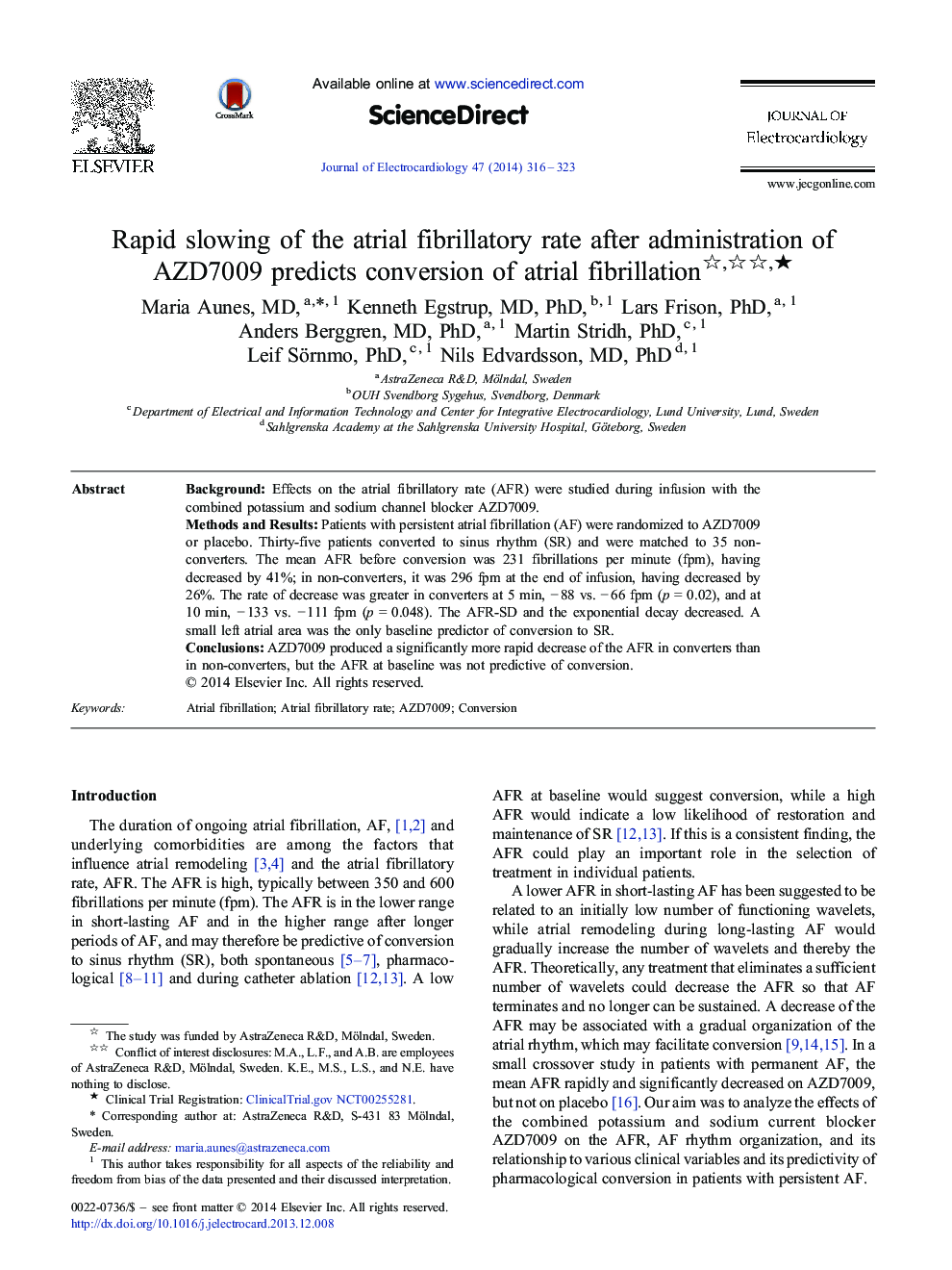| Article ID | Journal | Published Year | Pages | File Type |
|---|---|---|---|---|
| 2967616 | Journal of Electrocardiology | 2014 | 8 Pages |
BackgroundEffects on the atrial fibrillatory rate (AFR) were studied during infusion with the combined potassium and sodium channel blocker AZD7009.Methods and ResultsPatients with persistent atrial fibrillation (AF) were randomized to AZD7009 or placebo. Thirty-five patients converted to sinus rhythm (SR) and were matched to 35 non-converters. The mean AFR before conversion was 231 fibrillations per minute (fpm), having decreased by 41%; in non-converters, it was 296 fpm at the end of infusion, having decreased by 26%. The rate of decrease was greater in converters at 5 min, − 88 vs. − 66 fpm (p = 0.02), and at 10 min, − 133 vs. − 111 fpm (p = 0.048). The AFR-SD and the exponential decay decreased. A small left atrial area was the only baseline predictor of conversion to SR.ConclusionsAZD7009 produced a significantly more rapid decrease of the AFR in converters than in non-converters, but the AFR at baseline was not predictive of conversion.
